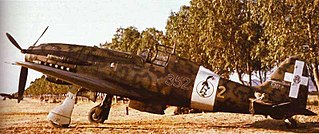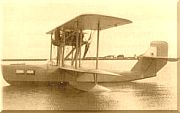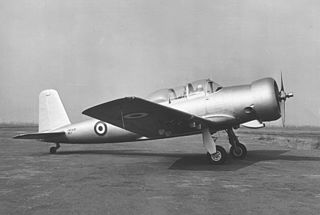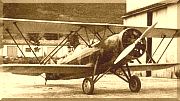
The Macchi C.200 Saetta, or MC.200, was a fighter aircraft developed and manufactured by Aeronautica Macchi in Italy. Various versions were flown by the Regia Aeronautica who used the type throughout the Second World War.

The Macchi C.205Veltro was an Italian World War II fighter aircraft built by the Aeronautica Macchi. Along with the Reggiane Re.2005 and Fiat G.55, the Macchi C.205 was one of the three "Serie 5" Italian fighters built around the powerful Daimler-Benz DB 605 engine. The C.205 was a development of the earlier C.202 Folgore. With a top speed of some 640 km/h (400 mph) and equipped with a pair of 20 mm cannon as well as 12.7 mm Breda machine guns, the Macchi C.205 Veltro was highly respected by Allied and Axis pilots alike. Widely regarded as one of the best Italian aircraft of World War II, it proved to be extremely effective, destroying a large number of Allied bombers. The Macchi C. 205 proved capable of meeting fighters such as the North American P-51D Mustang on equal terms, which encouraged the Luftwaffe to use a number of these aircraft to equip one Gruppe.

The Fiat G.55 Centauro was a single-engine single-seat World War II fighter aircraft used by the Regia Aeronautica and the Aeronautica Nazionale Repubblicana in 1943–1945. It was designed and built in Turin by Fiat. The Fiat G.55 was arguably the best type produced in Italy during World War II, but it did not enter production until 1943, when, after comparative tests against the Messerschmitt Bf 109G and the Focke-Wulf 190, the Luftwaffe itself regarded the Fiat G.55 as "the best Axis fighter".

The Macchi M.39 was a racing seaplane designed and built by the Italian aircraft company Aeronautica Macchi in 1925–26. An M.39 piloted by Major Mario de Bernardi (1893–1959) won the 1926 Schneider Trophy, and the type also set world speed records that year.

The Ambrosini SAI.7 was an Italian racing aircraft flown before World War II that entered production as a military trainer after the war. It was of conventional configuration, constructed of wood, with a tail-wheel undercarriage. Power was provided by an air-cooled, inverted inline engine, the Alfa-Romeo model 115 with 225 horsepower.
The CANSA C.6 was a training biplane developed in Italy during World War II. It was intended as an aerobatic intermediate trainer for the Regia Aeronautica and was of conventional tailskid configuration with a single-bay wing cellule with swept outer panels. Two prototypes were constructed, the single-seat C.6 and the two-seat C.6B, but no production order ensued.

The IMAM Ro.51 was an Italian fighter aircraft that first flew in 1937. It was designed for the 1936 new fighter contest for the Regia Aeronautica, with practically all the Italian aircraft builders involved.

The IMAM Ro.57 was an Italian twin-engined, single-seat monoplane fighter of the Regia Aeronautica. Based on a 1939 design by Giovanni Galasso the aircraft did not enter production until 1943.

The CANT 10 was a flying boat airliner produced in Italy in the 1920s. It was a conventional biplane design with single-bay, unstaggered wings of equal span, having seating for four passengers within the hull, while the pilot sat in an open cockpit. The engine was mounted in pusher configuration in the interplane gap.

The Fiat G.49 was an Italian two-seat basic trainer designed by Giuseppe Gabrielli and built by Fiat.

The Fiat G.8 was a military utility aircraft produced in Italy in the mid-1930s. Its design and production were undertaken at the CMASA works in Pisa which became part of Fiat in 1930, hence the type is sometimes referred to as the CMASA G.8 or Fiat-CMASA G.8. It was a conventional biplane design with staggered wings of unequal span braced by struts arranged in a Warren truss. The pilot and a single passenger sat in tandem open cockpits, and the aircraft was fitted with fixed tailskid undercarriage with divided main units.

The Fiat G.46 was a military trainer developed in Italy shortly after World War II.

The Macchi M.52 was an Italian racing seaplane designed and built by Macchi for the 1927 Schneider Trophy race. The M.52 and a later variant, the M.52bis or M.52R, both set world speed records for seaplanes.

The Macchi M.9 was a flying boat bomber designed by Alessandro Tonini and produced by Macchi in Italy close to the end of World War I and shortly afterwards.

The Macchi M.24 was a flying boat designed by Alessandro Tonini and produced by Macchi in Italy during the 1920s. Originally intended as a bomber, it was eventually produced for civilian use as well.

The Macchi M.41 was an Italian flying boat fighter prototype of 1927 designed and manufactured by Macchi. Its production model, the M.41bis, first flown in 1929, was in front line service from 1930 to 1938.

The Macchi M.71 was an Italian flying boat fighter of the 1930s designed and manufactured by Macchi.

The Macchi M.53 was an Italian reconnaissance floatplane designed and built in the late 1920s by Macchi for the Regia Marina.
The Tapanee Levitation 2 is a Canadian STOL amateur-built aircraft, designed and produced by Tapanee Aviation of Mont-Saint-Michel, Quebec. The aircraft is supplied as a kit for amateur construction.
The Sea Storm is an Italian homebuilt amphibious flying boat that was designed and produced by Storm Aircraft of Sabaudia. Storm Aircraft was originally called SG Aviation srl. When it was available the aircraft was supplied as a kit for amateur construction.


















